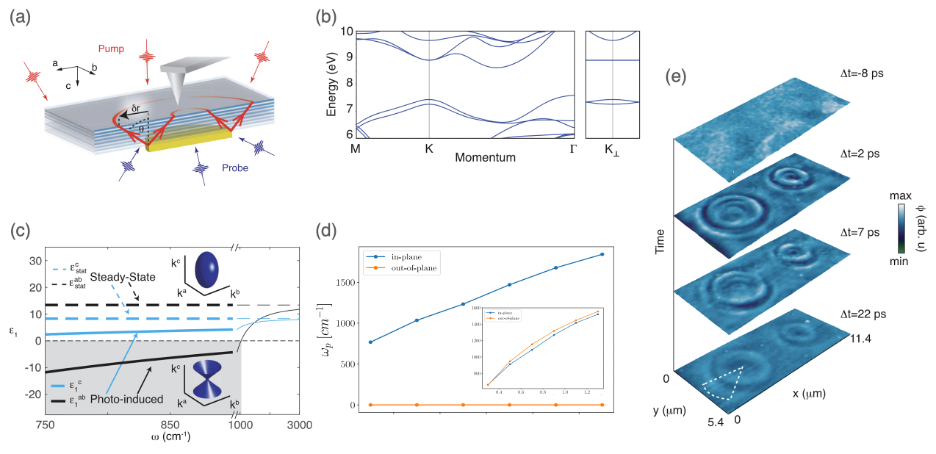Graphene, transition metal dichalcogenides (and many more) are all examples of 2D materials, a class of materials which is arguably one of the most studied in the last decade, both because of their unusual electric, magnetic and optical properties and because they can be easily stacked into integrated multi-functional Van der Waals heterostructrures. What 2D materials have in common is the reduced dimensionality which makes the effective Coulomb interaction between charged microscopic constituents stronger than in the bulk counterpart. A prototypical signature of the stronger Coulomb interaction is the emergence of strong excitonic features in optical spectroscopies. Furthermore, many two-dimensional materials display properties that are linked to a non-trivial topology and exotic magnetic states. In our group we theoretically explore the possibility of using light, either from classical laser sources or exploiting optical cavities to control 2D materials properties on demand [2, 3]. In particular we are interested in the emergence of peculiar dielectric properties, such as dielectric hyperbolicity [1], non-trivial light-induced topology and exotic excitonic phases in so-called Moiré structures.
Exciton hyperbolicity. Adapted from [3].
References:
[1] Phonoritons as Hybridized Exciton-Photon-Phonon Excitations in a Monolayer h-BN Optical Cavity.
S. Latini, U. de Giovannini, E. J. Sie, N. Gedik, H. Hübener, and A. Rubio.
Physical Review Letters 126, 227401 (2021).
DOI: 10.1103/PhysRevLett.126.227401
[2] Cavity Control of Excitons in Two-Dimensional Materials.
S. Latini, E. Ronca, U. de Giovannini, H. Hübener, and A. Rubio.
Nano Letters 19, 3473-3479 (2019).
DOI: 10.1021/acs.nanolett.9b00183
[3] Programmable hyperbolic polaritons in van der Waals semiconductors.
A. J. Sternbach, S. H. Chae, S. Latini, A. A. Rikhter, Y. Shao, B. Li, D. Rhodes, B. Kim, P. J. Schuck, X. Xu, X.-Y. Zhu, R. D. Averitt, J. Hone, M. M. Fogler, A. Rubio, and D. N. Basov.
Science 371,617-620 (2021).
DOI: 10.1126/science.abe9163
